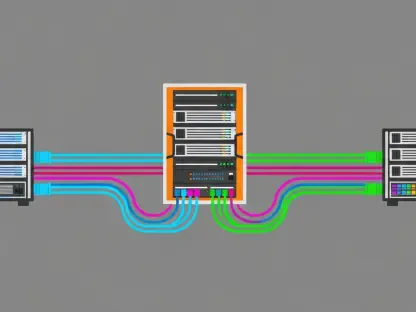With the ever-growing complexity of data types utilized by modern artificial intelligence systems, Ming-Lite-Uni emerges as a revolutionary AI framework. Designed to seamlessly integrate text and images through an autoregressive multimodal architecture, Ming-Lite-Uni addresses the increasing need for AI systems that can handle diverse types of data, such as text, images, video, and audio. In a world where AI applications are employed for tasks like image captioning and text-based photo editing, the framework seeks to mitigate significant challenges associated with uniting language comprehension and visual fidelity. This fusion is crucial for AI to interact effectively with humans, ensuring that machines can interpret and generate outputs across multiple formats with precision and contextual understanding.
The Challenge of Multimodal Integration
The ambition to harmonize the semantic understanding of languages with the visual fidelity required in tasks such as image synthesis presents a formidable challenge within the AI realm. Traditional models have typically operated in isolation, where separate systems manage different modalities such as language and vision. This separation often results in outputs that lack coherence when tasks necessitate both interpretation and generation across these modalities. A language model might competently understand a textual prompt but lack the capacity to visually manifest it, while a visual model might replicate details with high fidelity but fail to grasp nuanced language instructions. The disconnect results in inefficiencies and may demand extensive computational resources for the independent training of each modality, thus limiting scalability. These hurdles underscore the pressing need for a unified system that can smoothly integrate these modalities, delivering a coherent user experience across diverse tasks and data formats.
Technology Limitations
While existing technologies attempt to bridge the divide using diffusion-based techniques and combinations of token-based language models and image generation frameworks, they often fall short of comprehensive semantic depth. These architectures have managed to generate visually luxurious content but frequently struggle to produce outputs that are contextually rich and aligned with user inputs. Tools like TokenFlow attempt to marry token-based language models with image generation backends, focusing on achieving pixel-perfect accuracy but sometimes sacrificing the nuanced semantic interpretation essential to comprehensive AI interaction. Although certain models such as GPT-4o have shifted toward incorporating embedded image generation capabilities, they encounter difficulties in realizing a fully integrated understanding of context. The inherent challenge remains converting abstract text prompts into contextually meaningful visuals within a fluid interaction, without fragmenting the user experience into segmented processes.
Ming-Lite-Uni’s Approach
Researchers at Inclusion AI, Ant Group have introduced Ming-Lite-Uni as an open-source solution designed to resolve these multimodal interaction challenges through a unified autoregressive framework. This innovative approach merges a robust autoregressive model for textual data with a finely tuned diffusion image generator to deliver heightened coherence and visual accuracy. By leveraging enterprises like MetaQueries and M2-omni, Ming-Lite-Uni incorporates an inventive component: multi-scale learnable tokens. These tokens act as decipherable visual units supported by a multi-scale alignment strategy that maintains coherence across diverse image scales. This framework not only simplifies model training but also opens the door for the artificial intelligence community to delve deeper into research and development by providing open access to model weights and implementation details, thus driving the quest toward general artificial intelligence.
Framework Mechanism and Strategy
At the heart of Ming-Lite-Uni’s advanced mechanism is its ability to compress visual inputs into structured token sequences that span multiple resolutions, such as 4×4, 8×8, and 16×16 image patches. Each resolution embodies varying levels of detail, from layout to texture, processed simultaneously with textual inputs through a substantial autoregressive transformer. The process’s design incorporates unique start and end tokens supported by distinct positional encodings defined for each resolution level. An integral part of the model is the multi-scale representation alignment strategy, which ensures coherence across the different layers by aligning intermediate and output features using a mean squared error loss technique. Empirical tests have shown this method can enhance image reconstruction quality significantly by over 2 decibels in PSNR and improve GenEval scores by 1.5%. Unlike conventional systems that require thorough retraining of language and vision components, Ming-Lite-Uni retains language model parameters in a fixed state while exclusively fine-tuning the image generator, promoting rapid updates and efficient scalability.
Comprehensive Testing and Results
Ming-Lite-Uni has undergone extensive testing across various multimodal tasks, including text-to-image generation and sophisticated image editing. These tests encompass challenges such as creating a virtual scene of a sheep wearing sunglasses or subtracting flowers from a landscape. The framework consistently displayed high fidelity and contextual fluency, even when tasked with abstract or stylistic prompts such as “Hayao Miyazaki’s style” or “Adorable 3D.” Training utilized a dataset exceeding 2.25 billion samples, integrating information from LAION-5B, COYO, and Zero. Input from these resources, along with filtered samples from Midjourney and Wukong, enrich the framework’s data diversity, further enhancing its performance. Additionally, leveraging fine-grained aesthetic assessment datasets like AVA, TAD66K, AesMMIT, and APDD ensures the generated outputs not only meet functional demands but are also inherently visually appealing and resonant with human aesthetic preferences.
Balancing Language Comprehension and Visual Output
Ming-Lite-Uni skillfully integrates semantic robustness with high-resolution image production within a single framework, effectively addressing traditional model limitations. Through the alignment of image and text representations at the token level across different scales, the platform departs from standard model behaviors that rely on a static encoder-decoder setup. By incorporating FlowMatching loss techniques and scale-specific boundary markers, the framework enhances the interaction between underlying transformer and diffusion layers. This seamless interaction enables the autoregressive model to perform intricate editing tasks with precise contextual understanding, achieving a balance between language comprehension and visual generation. Such innovations mark significant progress toward the development of more nuanced and sophisticated multimodal AI systems, capable of delivering not only visually captivating but contextually appropriate outputs across a variety of applications.
Community Access and Impact
The aspiration to align the semantic interpretation of languages with the precision required for tasks like image synthesis presents a significant challenge in AI. Traditionally, models have functioned independently, handling specific tasks through separate systems dedicated to language and vision. This isolation often leads to outputs that lack coherence when tasks demand both interpretation and generation across these modalities. A language model may be adept at understanding text prompts but struggle to transform them visually, while a visual model may excel at replicating intricate details yet fail to comprehend subtle linguistic cues. This disconnect creates inefficiencies, requiring substantial computational resources to independently train each modality, which hinders scalability. These obstacles highlight the urgent need for a unified system capable of seamlessly combining these modalities, ensuring a cohesive user experience across various tasks and data formats in the ever-evolving realm of artificial intelligence.









